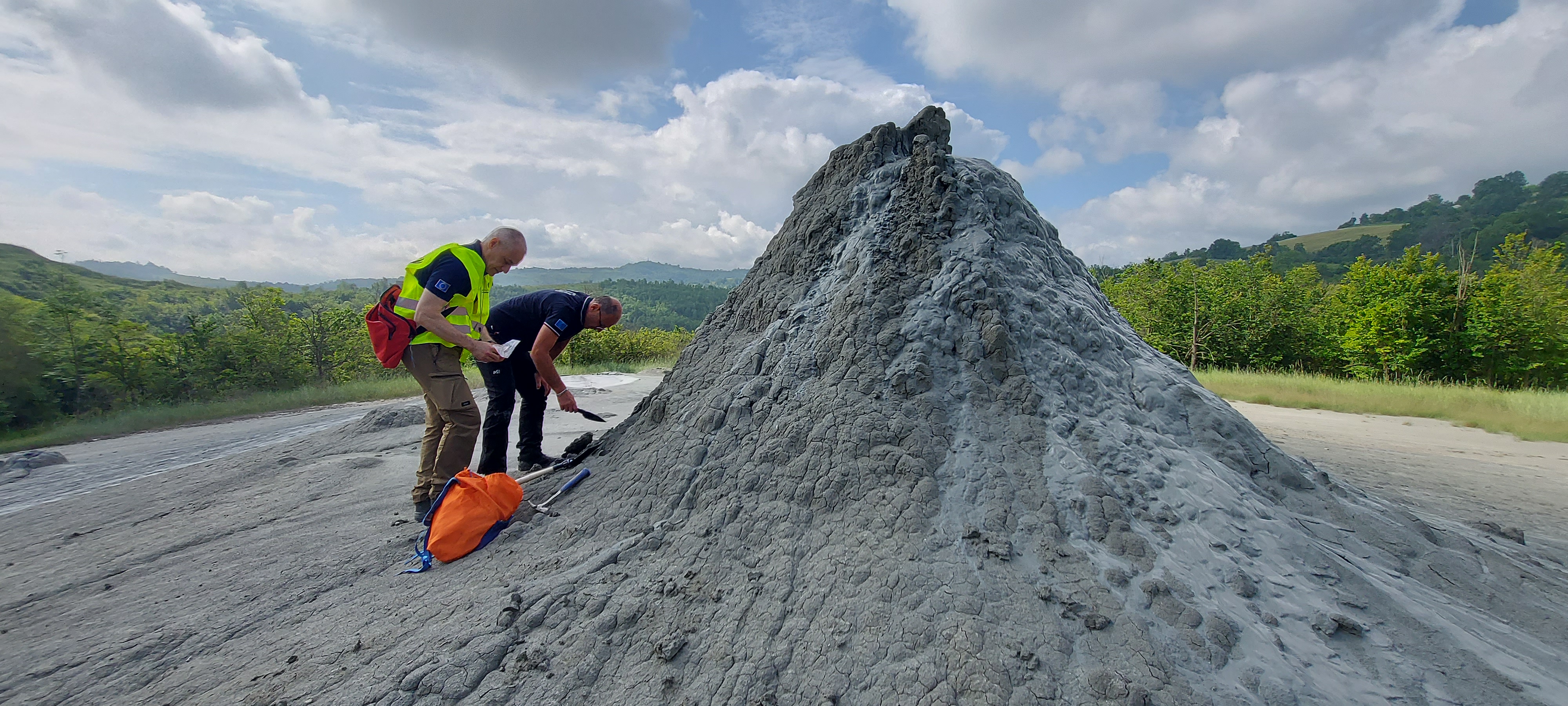 Picture 1. June 6, 2023: Mud sampling near gas emission vents at the Salse di Nirano Nature Reserve (MO, Italy).
Picture 1. June 6, 2023: Mud sampling near gas emission vents at the Salse di Nirano Nature Reserve (MO, Italy).
 Picture 2. June 7, 2023: Mud sampling near the badlands located on the outer edge of the Salse di Nirano Nature Reserve (MO, Italy).
Picture 2. June 7, 2023: Mud sampling near the badlands located on the outer edge of the Salse di Nirano Nature Reserve (MO, Italy).
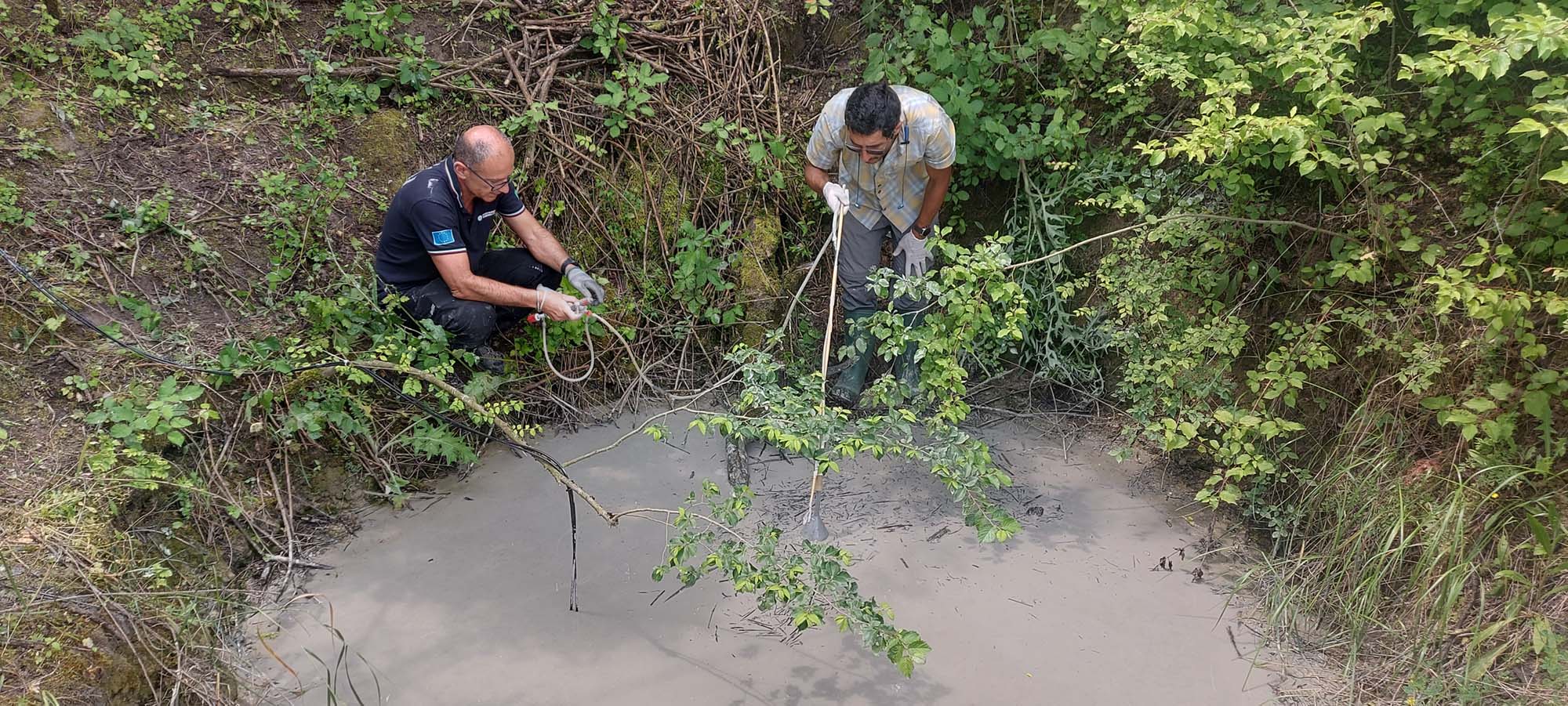 Picture 3. June 7, 2023: Sampling of the gas phase from pool F inside the Salse di Nirano Nature Reserve (MO, Italy).
Picture 3. June 7, 2023: Sampling of the gas phase from pool F inside the Salse di Nirano Nature Reserve (MO, Italy).
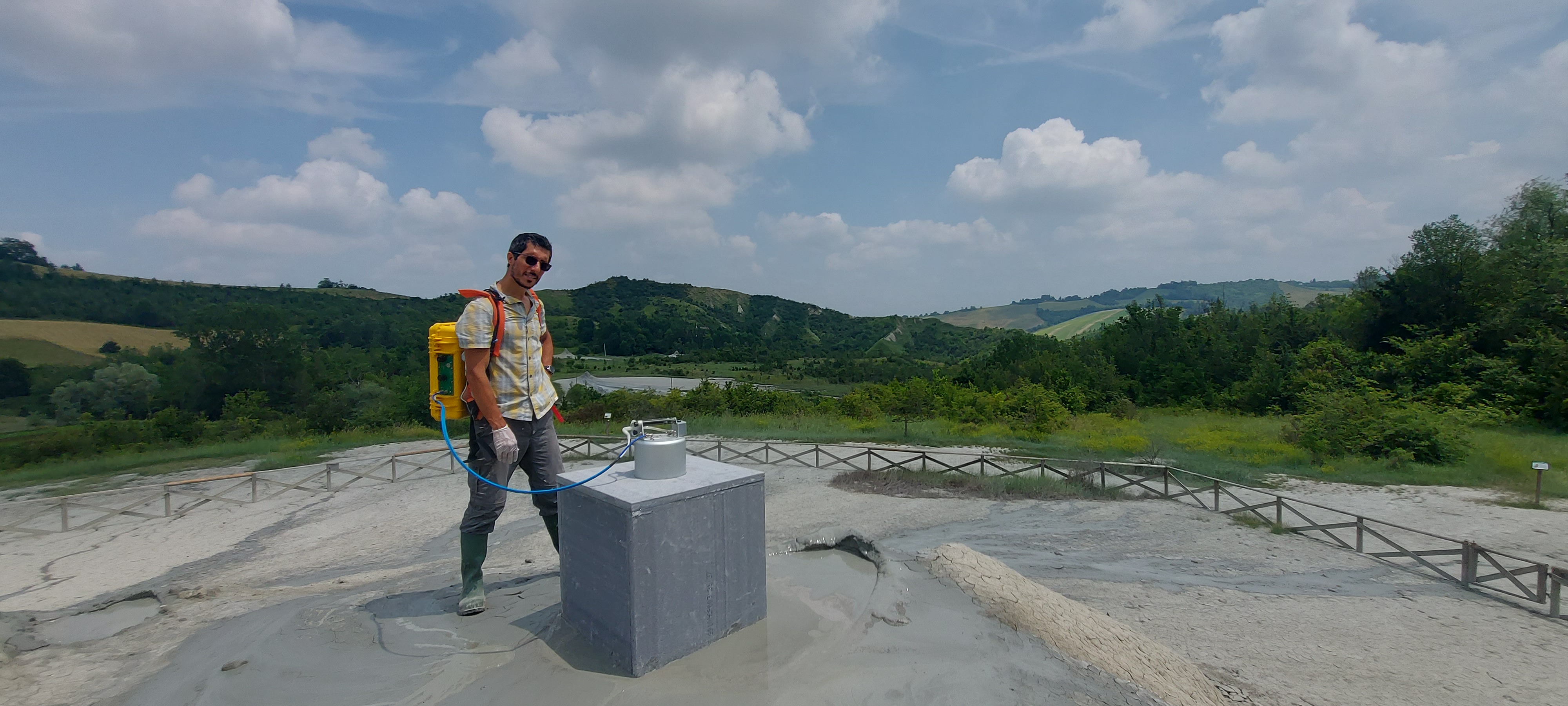 Picture 4. June 7, 2023: CO2 and CH4 flux measurement from the main pools to Salsa Alta at the Salse di Nirano Nature Reserve (MO, Italy).
Picture 4. June 7, 2023: CO2 and CH4 flux measurement from the main pools to Salsa Alta at the Salse di Nirano Nature Reserve (MO, Italy).
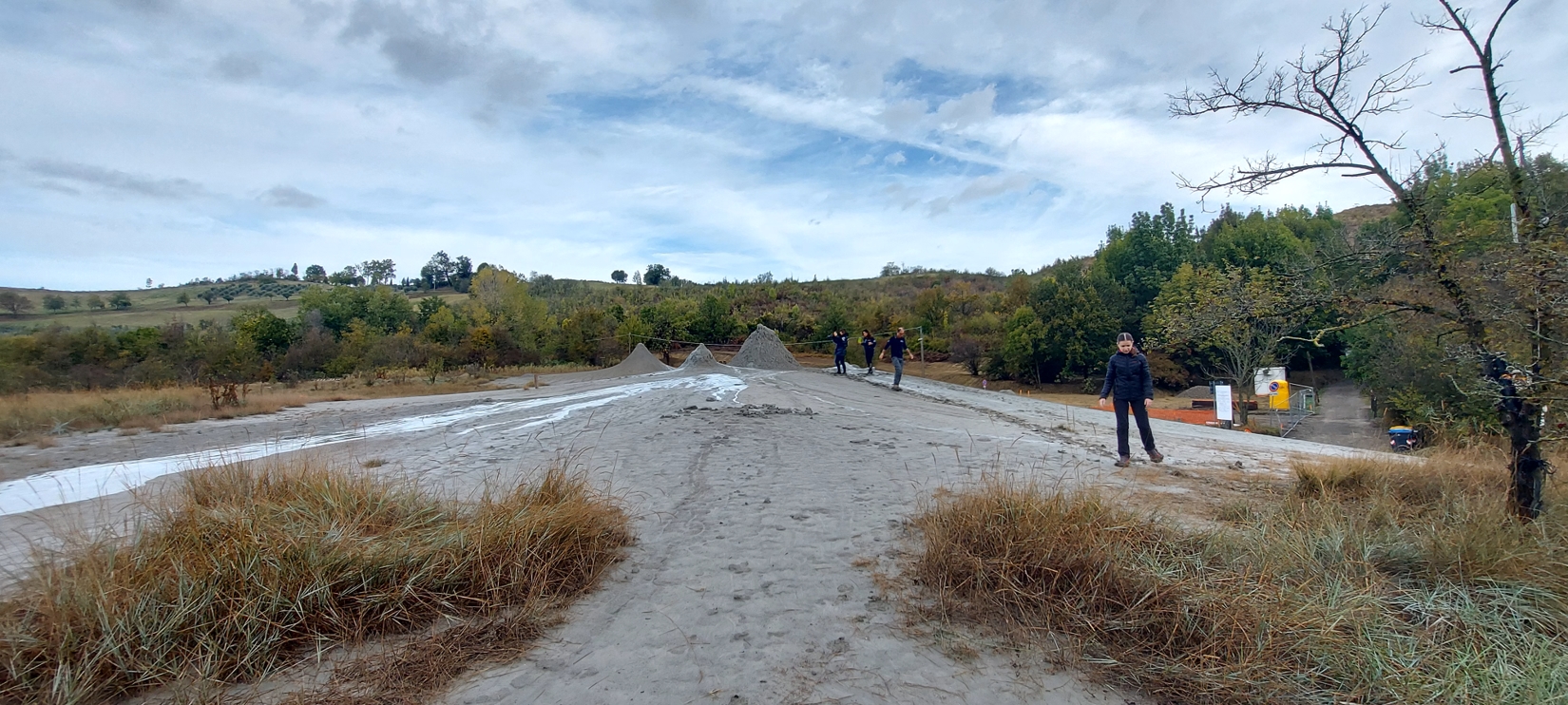 Picture 5. October 25, 2023: Check at the continuous CO2 monitoring station and sampling of water and gases from the main pools within the Salse di Nirano Nature Reserve (MO, Italy).
Picture 5. October 25, 2023: Check at the continuous CO2 monitoring station and sampling of water and gases from the main pools within the Salse di Nirano Nature Reserve (MO, Italy).
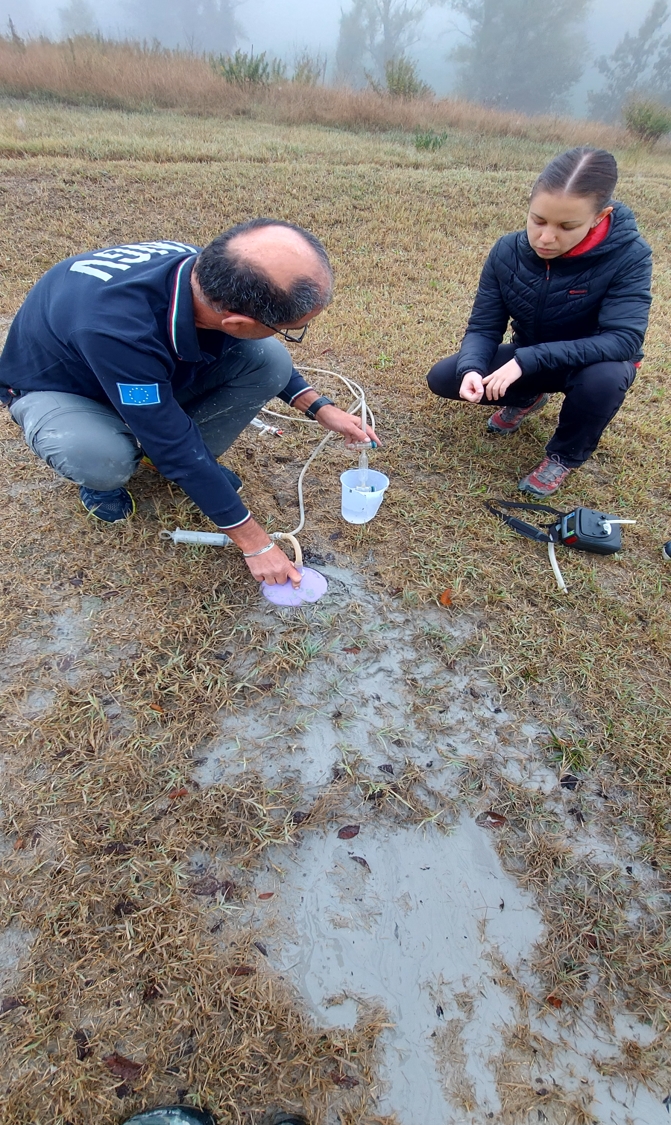 Picture 6. October 26, 2023: Sampling of the gas phase from the main pools at Sarsa di Monte Gibbio (MO, Italy).
Picture 6. October 26, 2023: Sampling of the gas phase from the main pools at Sarsa di Monte Gibbio (MO, Italy).
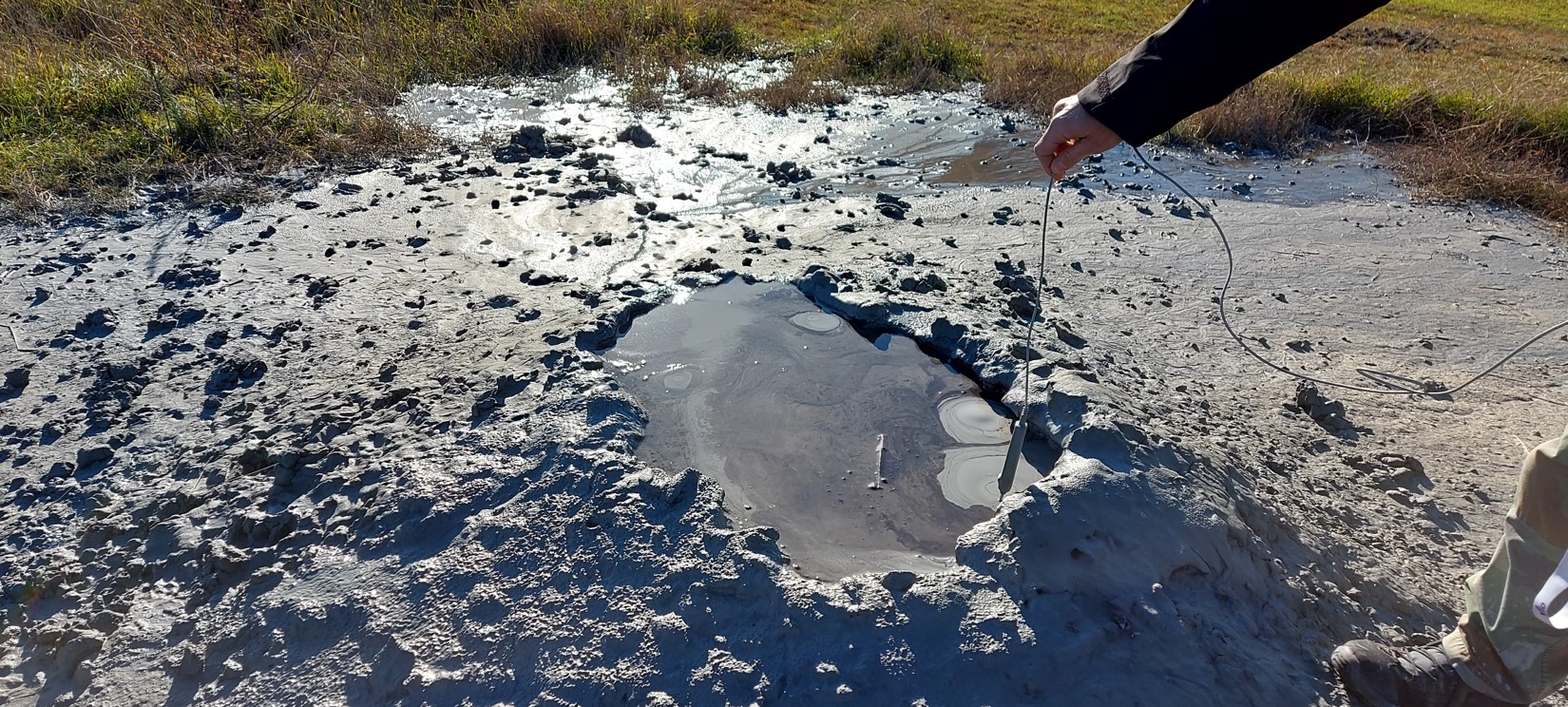 Picture 7. December 15, 2023: Temperature, pH and conductivity measurements from a pools with noticeable presence of hydrocarbons on the surface at Salse di Ospitaletto (MO, Italy).
Picture 7. December 15, 2023: Temperature, pH and conductivity measurements from a pools with noticeable presence of hydrocarbons on the surface at Salse di Ospitaletto (MO, Italy).
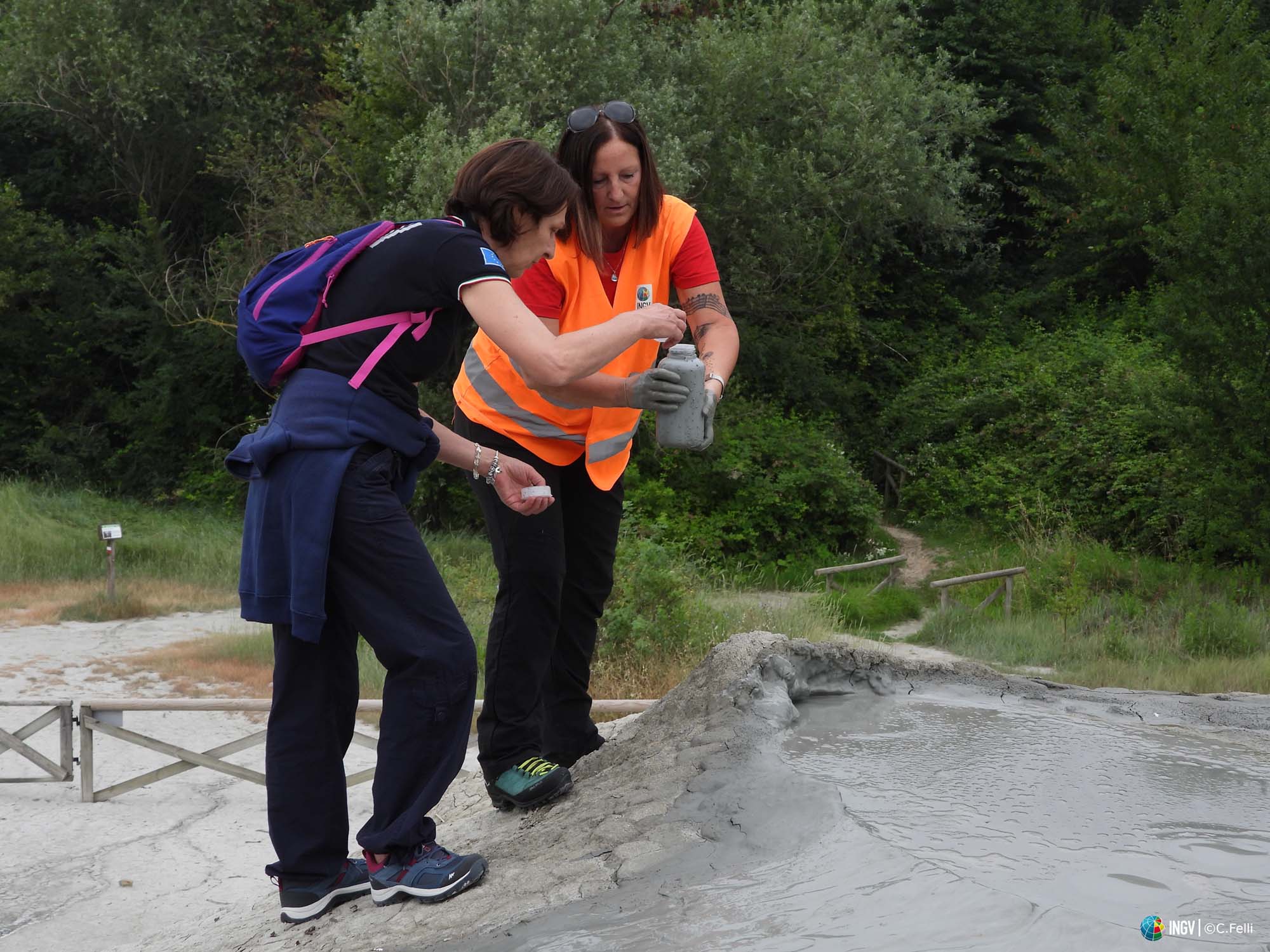
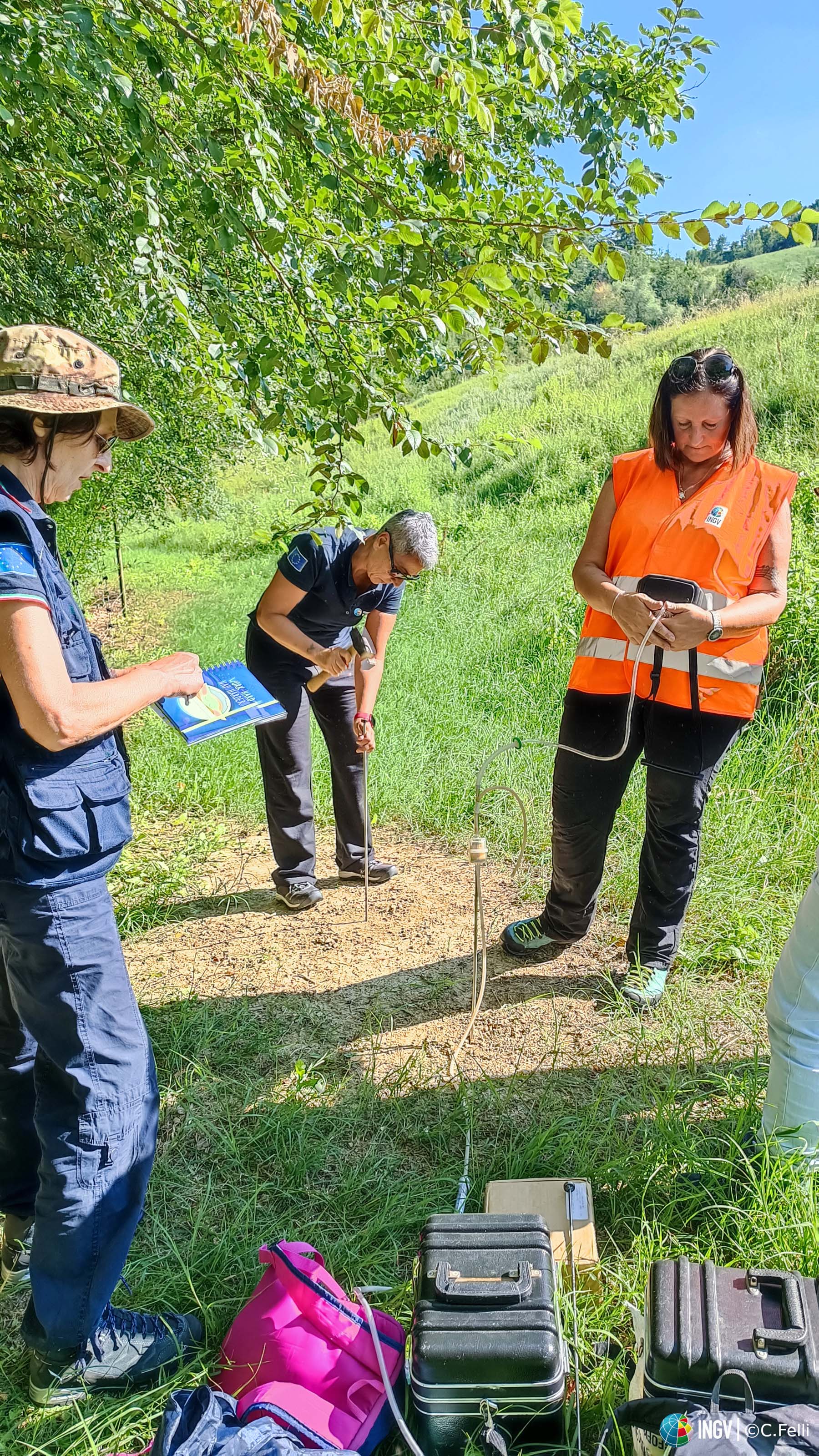 Picture 9. July 4, 2024: In situ measurement of 222Rn, 220Rn, CO2, CH4, O2, H2 concentration from soil and soil gas sampling for chemical and isotopic analyses in vegetated areas within the Salse di Nirano Nature Reserve (MO, Italy).
Picture 9. July 4, 2024: In situ measurement of 222Rn, 220Rn, CO2, CH4, O2, H2 concentration from soil and soil gas sampling for chemical and isotopic analyses in vegetated areas within the Salse di Nirano Nature Reserve (MO, Italy).
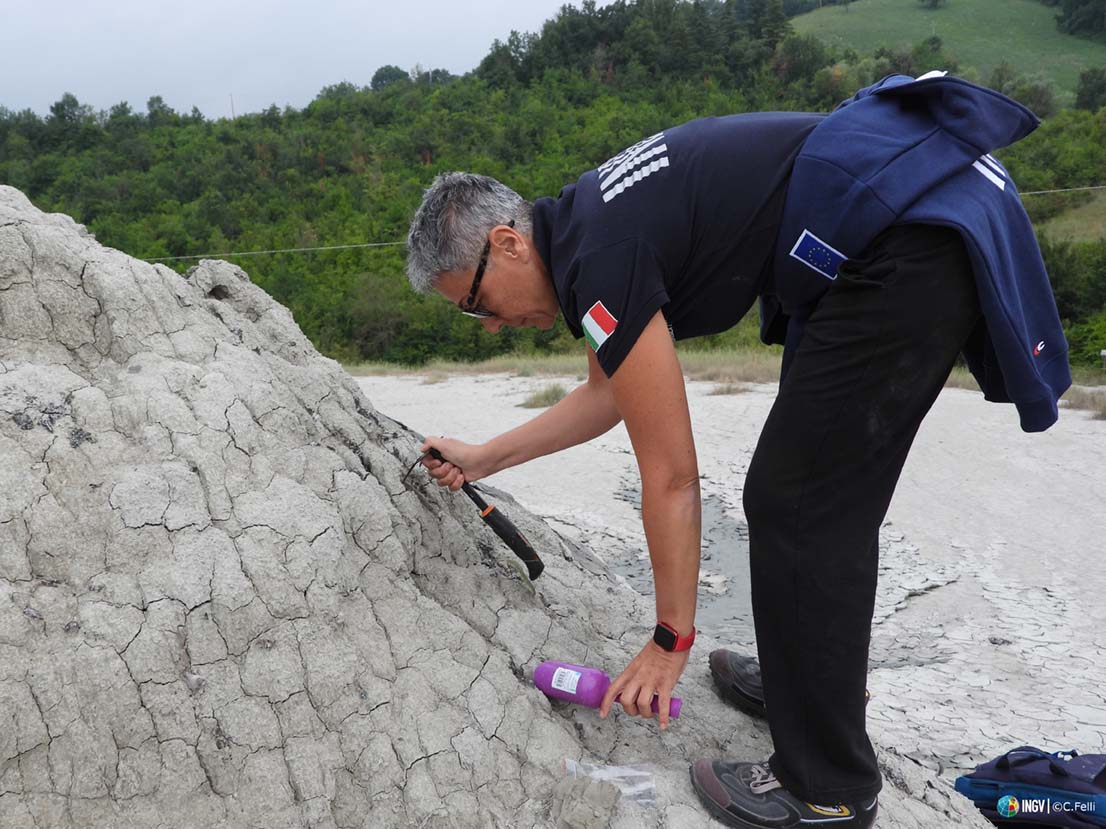
In the frame of PROMUD project, the WP3 working group aims to investigate geochemical parameters at Maccalube di Aragona and Salse di Nirano by means of flux and composition of the emitted fluids from MVs in order to better understand the origin of the fluids and mud emitted from these MVs areas and to evaluate their state of activity.
Following an initial review of existing data, a selection of sites was made for discrete and continuous monitoring of geochemical parameters. In particular, quarterly sampling of fluids released from selected active pools in the two study sites is carried out with the aim to evaluate the possible variations in composition and/or emission rate of the fluids emitted over time.
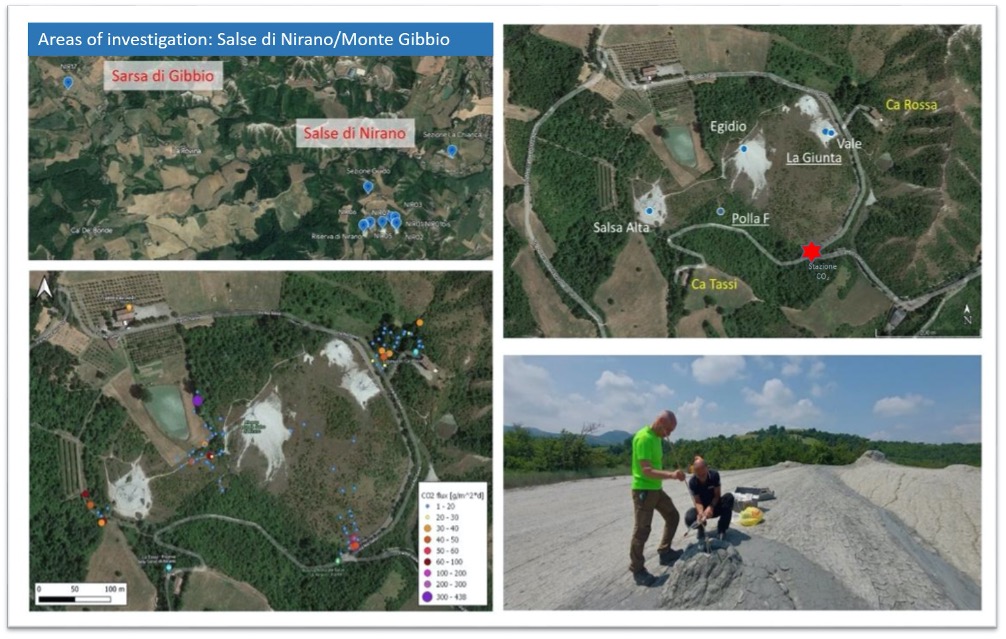 Figure 1. Location of the mud, gas and water sampling points, CO2 and CH4 flux measurements points carried out by WP3 in different surveys from June 2023 to July 2024 at the Riserva Naturale of Salse di Nirano (MO, Italy). The last image shows a detail of the gas sampling at La Giunta MV, a site where a continuous monitoring system (temperature, conductivity, level) has been installed.
Figure 1. Location of the mud, gas and water sampling points, CO2 and CH4 flux measurements points carried out by WP3 in different surveys from June 2023 to July 2024 at the Riserva Naturale of Salse di Nirano (MO, Italy). The last image shows a detail of the gas sampling at La Giunta MV, a site where a continuous monitoring system (temperature, conductivity, level) has been installed.
In suitable selected sites both in Nirano and Maccalube have been installed of continuous multi-parametric monitoring stations (temperature, conductivity, level).
Preliminary data show possible dependence of the parameters monitored on atmospheric parameters and the lack of dependence with tidal parameters. Further research developments should consider possible variations of gas flow rate with time. Hence, we aim at continuously monitoring the Nirano and Aragona sites with salinity, temperature and pressure logging probes submerged in the muddy waters.
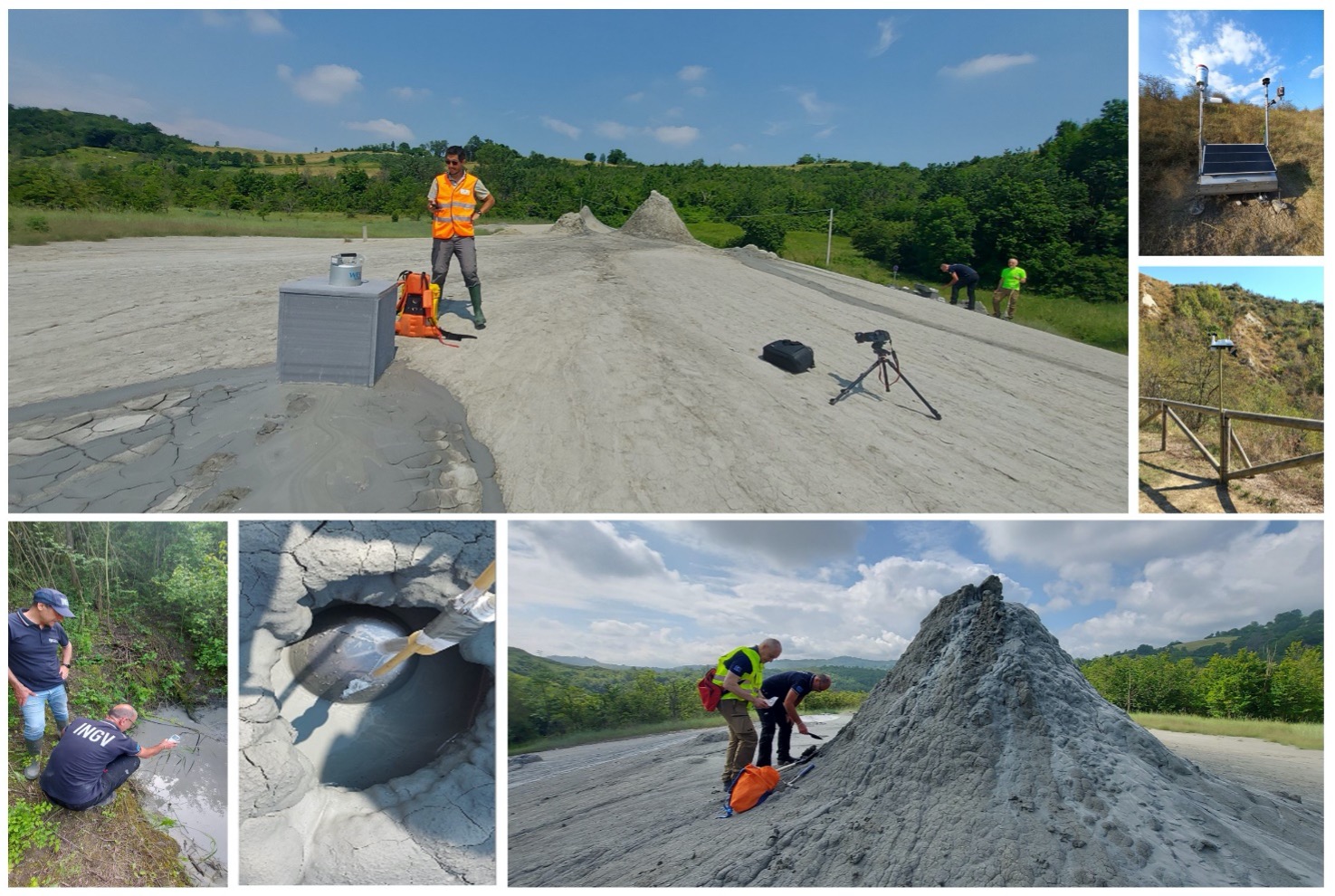 Figure 2. CO2 and CH4 flux measurements at La Giunta MV, detail of the continuous CO2 measurement station and the weather station, and images relating to water, free gas and mud sampling carried out at the Salse di Nirano Nature Reserve (MO, Italy).
Figure 2. CO2 and CH4 flux measurements at La Giunta MV, detail of the continuous CO2 measurement station and the weather station, and images relating to water, free gas and mud sampling carried out at the Salse di Nirano Nature Reserve (MO, Italy).
In order to estimate the amount of gas that is being released around the main vents area at Salse di Nirano and Aragona, flux measurements (CO2, CH4) are conducted using a closed-chamber flux-meter system and collect gas samples to analyze their composition at the highest measured points. Moreover, annual extensive geochemical soil gas surveys (CO2, CH4, Rn, He, H2 and light hydrocarbons) will be carried out with the aim of identifying enhanced permeability sectors possibly linked to preferential leakage pathways. This activity is important since previous studies at Salse di Nirano highlighted that the monitoring of soil gases allowed to constrain the relationship between geochemistry and tectonics, and permitted the identification of areas with high permeability where new active mud emissions occurred after data acquisition. As part of these studies, a CO2 flux meter monitoring station was installed in the area identified as most anomalous.
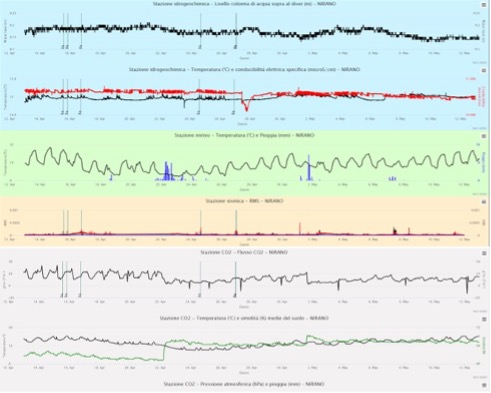 Figure 3. Continuous data from the continuous Temp, level and conductivity station at La Giunta, from the seismic station (Ca Tassi) and from the continuous CO2 station, recorded in the period April-May 2024.
Figure 3. Continuous data from the continuous Temp, level and conductivity station at La Giunta, from the seismic station (Ca Tassi) and from the continuous CO2 station, recorded in the period April-May 2024.
A micropaleontological study of the mud of the Maccalube di Aragona and the Salse di Nirano MVs is carried out in order to determine their calcareous plankton content and possible to establish the stratigraphy and depth of fluid rock source. The study is mainly focused on the analyses of calcareous nannofossil assemblages, but also foraminifera will be considered. The research and the analysis of the rock chips contained in the mud and belonging to the rocks that the mud passed through are ongoing. Samples have been taken from cones, level-pool mud vents, mud flows, and also from adjacent areas for comparison with geological units outcropping outside the mud volcano area. On selected mud samples Boron contents and 11B values will be determined as well.
Micropaleontological and stratigraphic analysis to determine the depth of the mud source, the study of the active microbiological communities that thrive both within the emitted muds and in the immediately surrounding sites, the study of the magnetic properties of the muds collected in the vicinity of the pools, cones and rocks outcropping in the surrounding area, and the recording of temporal variations in the concentration, mineralogy and coercivity of the magnetic minerals will be fundamental for determining the depth of the mud source, the state of the activity of the mud volcanoes and to evaluate their evolution.
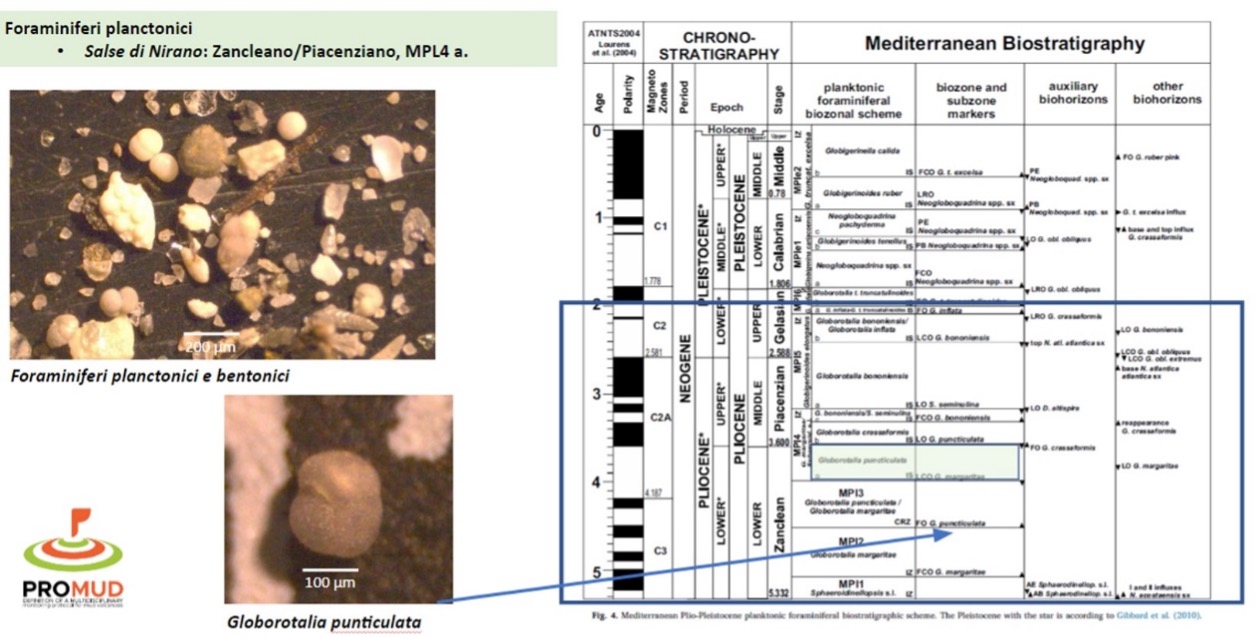 Figure 4. Mediterranean Plio-Pleistcene planktonic foraminiferal biostratigraphic scheme, and detail of the planktonic and benthic foraminifera and of the globorotalia punticulata recognized in the sampled muds at the Salse di Nirano Nature Reserve (MO, Italy).
Figure 4. Mediterranean Plio-Pleistcene planktonic foraminiferal biostratigraphic scheme, and detail of the planktonic and benthic foraminifera and of the globorotalia punticulata recognized in the sampled muds at the Salse di Nirano Nature Reserve (MO, Italy).


